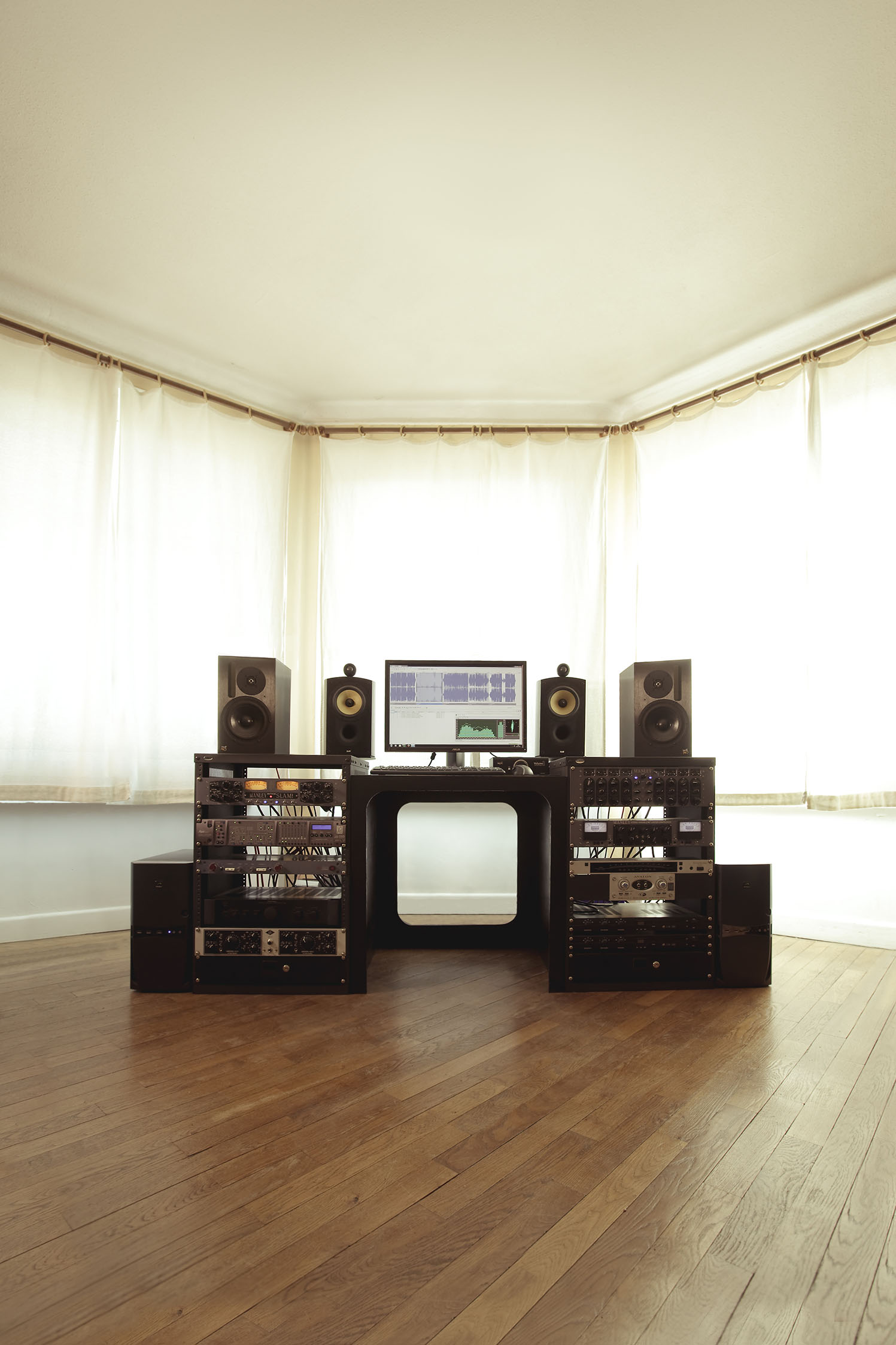What is mastering ?
Mastering optimizes album tracks in terms of color (frequency band equilibrium), dynamic compression (relative perception of attacks and of sustained sounds) and RMS volume (energy emitted by the speakers for a given sound peak).
At MyProds, we usually employ a classic method of mastering, comprised of three steps:
1) Equalization
Equalization modifies the color of your mix, in order to provide a more open sound.
2) Analog Compression
Compression links mixed tracks.
From a group of superposed instruments, the sensation of hearing a group playing together, rather than separately, is created.
We use two or three compressors in a row, each bringing its own special touch to the sound.
“Parallel Compression” is a frequently used mastering technique, consisting of mixing compressed and non-compressed sound. This technique provides a good balance between perceived punches and softer sounds.
3) Numerical Limiting
Limiting increases the perceived volume of your music by reducing peak volume and applying positive gain to the global sound. There are two numerical limiting techniques:
- Hard Clipping: Pushing A/D converters to the limit at the end of the mastering process naturally results in sharp-edged clipping. This technique is only useful with high quality converters (PrismSound, Lavry Gold, etc.),
- Soft Clipping: In this case, a specific software or hardware clips the signal. The look-ahead function (the ability to anticipate the signal) therefore allows for a softer reaction and a good command of the gain reduction curve.

In mastering, it is possible to use the Stereo Processing signal (Left and Right) or the Mid/Side processing signal (Left+Right and Right+Left). The latter, known as M/S Processing, is very powerful for playing with the stereo width of your music or for mastering music destined for vinyls.
In fact, lateral displacement of the needle on a vinyl corresponds to the “Left+Right” system, and vertical sound displacement corresponds to the “Left-Right” system.
Effective management of these two systems allows the needle to move fluidly, and thus, provides high quality sound.
In the mastering chain, it can be interesting to add peripheral devices (equalizers or compressors) equipped with tubes or transformers, which enrich sound harmony and allow for a fuller sound.
